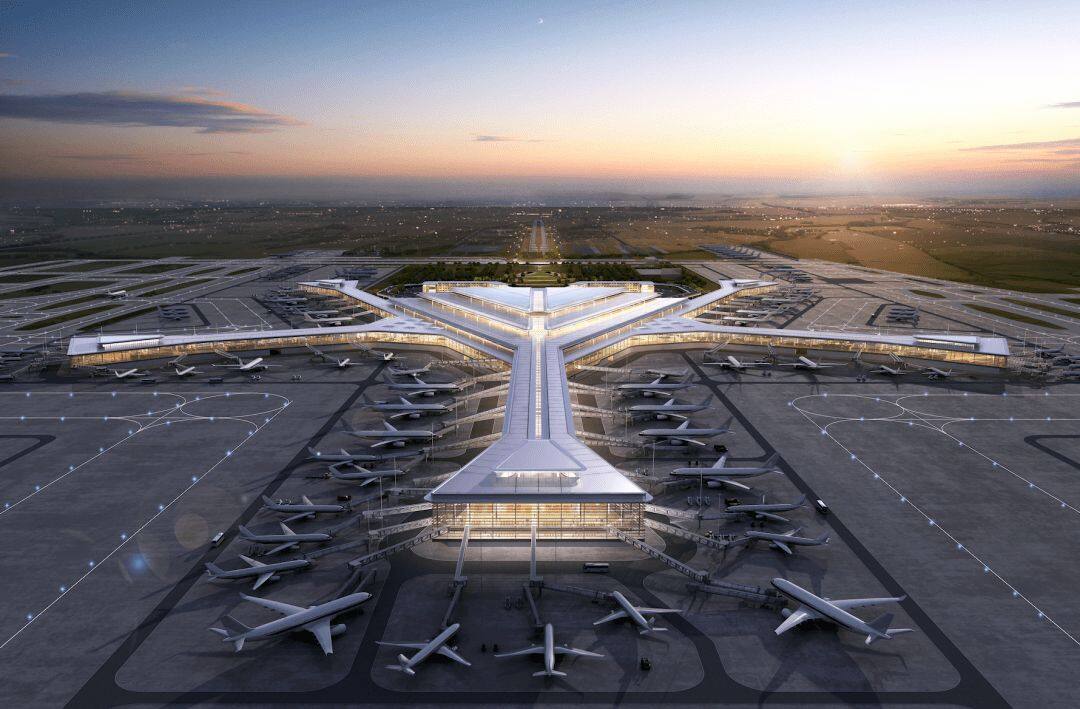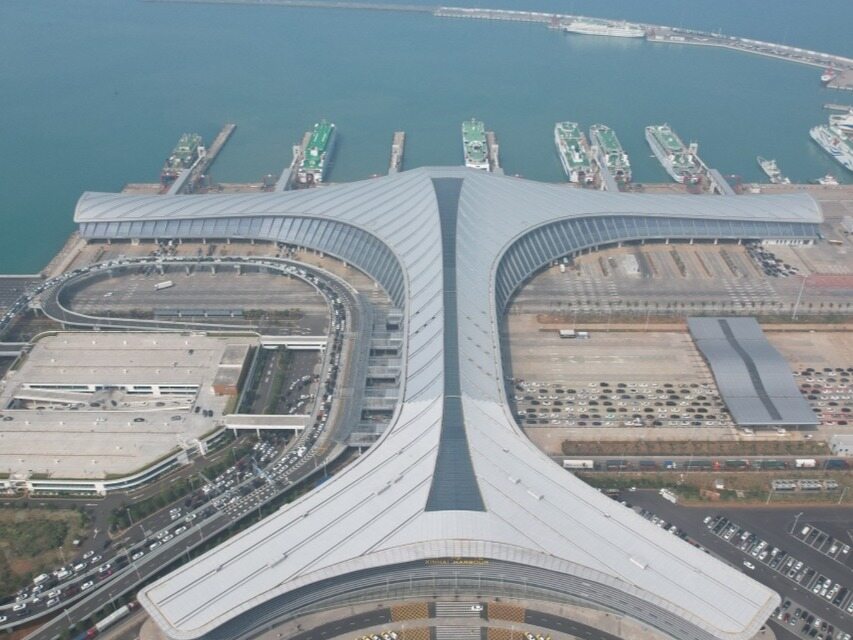- After the project is completed, it can meet the annual passenger throughput of 40 million passengers

On February 28, 2022, the T3 terminal building project of the Changsha Airport Reconstruction and Expansion Project officially started, and the ceremony was held at the construction site of the core area of the F hall of the T3 terminal building.

According to reports, the comprehensive transportation hub project of Changsha Airport Reconstruction and Expansion Project has started construction. The newly started T3 terminal is the key project of Changsha Airport Reconstruction and Expansion Project. The initial approved construction area of the project is about 500,000 square meters, and the project investment is about 7.94 billion yuan. The east-west length is about 1,000 meters, the north-south length is about 1,200 meters, the main building is 44.65 meters high, and the apron is planned to have nearly 75 seats, which can meet the annual passenger throughput of 40 million.
The T3 terminal adopts an innovative five-finger corridor configuration, which is shaped like a five-pointed star, adding a new star to Changsha, which has the reputation of its own star city, which means the star of Changsha. The main building has three floors above ground and one basement floor, with optimized layout of functional divisions. The third floor is the departure floor, where functions such as check-in, security check, international joint inspection, and international waiting are planned; the second floor is the mixed flow floor for domestic departures and arrivals; Baggage passage. The five-finger corridor configuration places the international functions in the center, facilitates the interchange between international and domestic, and enhances the energy level of the transit hub.
Changsha Star is an urban living room full of humanistic charm. The T3 terminal of Changsha Airport is more integrated and humanized.

The transfer time between international and domestic passengers without luggage is less than 45 minutes.
Intensive allocation of construction area, the corresponding construction area index of T3 terminal per million passengers is 12,500 square meters, and the passenger area accounts for 62%, which is the most economical and intensive in similar airports in China. The two-story three-dimensional "landscape plaza" introduces airside and landside characteristic viewing platforms to create a characteristic aviation experience; the integrated utilization of green building technologies brings together 7 types of technology applications to reduce building power consumption and intelligently manage energy at the same time , to achieve industry-leading energy-saving effect.
The transit experience is convenient and efficient, and the planning concept of "dual transit area" is innovatively proposed. The inter-transit time for international and domestic passengers without luggage is less than 45 minutes, which is significantly ahead of similar domestic airports. Domestic passengers can transfer to the nearest airport on the same floor in the domestic waiting area; walking is preferred. The whole process is sheltered from the rain, and a plan of double-level connection is proposed. Domestic and international passengers arrive at the transportation transfer center through indoor leveling, providing passengers with a comfortable transfer experience sheltering from the rain throughout the whole process; special passenger humanistic care, for family passengers, disabled Passengers, unaccompanied children and other passengers, carefully arrange humanized functions such as family toilets, mother-infant rooms, children's theme activity areas, and plan special rest areas and waiting areas for flight delays and stranded passengers to set up business and office functional facilities; Culture, the terminal building and the comprehensive transportation center integrate the elements of Hunan and Hunan culture, and the space, functions, facilities and equipment are presented in a novel manner, fully demonstrating the regional characteristics.

More safety, the entrance space of the terminal building is equipped with explosion-proof inspection and temperature measurement.
Changsha Airport Terminal T3 adheres to the operation concept of "universal command, regionalized management, and professional support", and builds "three major platforms" and "eight major business systems" to create an agile and smart airport.
Paperless self-service throughout the whole process, planning 100% self-service security inspection and verification channels, 100% self-service boarding channels, 50% self-service border inspection channels, and 60% self-service baggage check facilities (self-service baggage check-in equipment is 100% self-service manual switchable), to achieve Passenger clearance is unmanned and paperless; an automated baggage system is adopted, a tipping-type automatic sorting system and conveying system with good economy and high automation level are planned, and the background automatic processing function of transfer baggage and the automatic storage function of early baggage are fully implemented. The 5G smart application in the airport realizes intelligent systems such as mobile interactive service terminals, accurate passenger services, AR indoor navigation, and full-process baggage tracking, making the airport smarter and more efficient.
Changsha Airport T3 terminal actively responds to the needs of health and epidemic prevention and anti-terrorism, and highlights safety. The entrance space of the terminal building is equipped with explosion-proof inspection and temperature measurement, and 100% of passengers have passed the inspection, which can effectively respond to sudden epidemics and terrorist incidents. An 80% millimeter-wave security inspection system is planned to eliminate the cumbersome process of passenger security inspection and at the same time improve the accuracy of identifying dangerous items; the terminal has been specially designed and demonstrated for fire protection, and adopts mature and efficient technical systems such as structure and curtain wall to ensure the operation of the airport Safe, build a safe airport.
It is reported that this project is jointly constructed by a consortium composed of three central enterprises and local state-owned enterprises, namely China Construction Eighth Bureau, Hunan Construction Engineering Group, and China Construction Fifth Bureau. China Construction Eighth Bureau is the lead unit of the general contracting of the consortium. As a key member of China State Construction Engineering Corporation, a Fortune 500 company, China Construction Eighth Engineering Co., Ltd. has undertaken the construction of 81% of domestic airport terminals in provincial capitals, making it the company with the largest number of general contracted terminals in China. Since it officially entered the Changsha market in 2005, it has successively undertaken the construction of Changsha Huanghua Airport Terminal T2, the new corridor project from the Maglev Express (airport station) to Terminal T2, and the technical renovation project of the international corridor of Changsha Airport Terminal T2, etc. project. Editor/He Yuting
Comment
 Praise
Praise
 Collect
Collect
 Comment
Comment
 Search
Search














Write something~